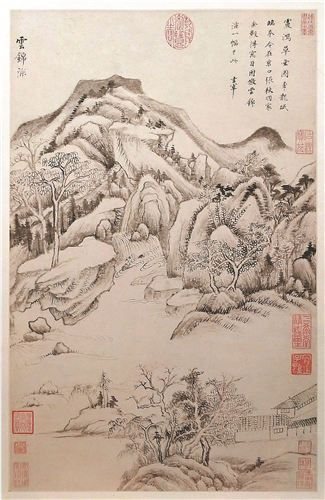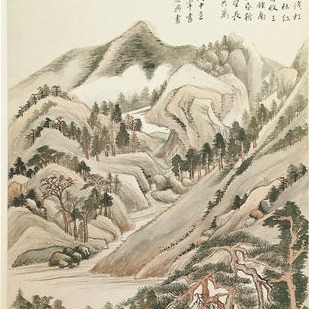Imperial splash


"We hope to create a panoramic exhibition that presents the artist and his ideas in the context of the art history (of imperial China)."
Dong was by far the most influential figure in the late Ming (1368-1644) and early Qing (1644-1911) dynasties. His artistic theories dominated the tone and principles for long after that, says Ling Lizhong, head of the art department of Shanghai Museum, who is also the curator of the exhibition.
While preparing for the exhibition, Ling made a list of all the works he wanted to show like a child writing to Santa Claus.
"I didn't think about whether it was possible to borrow these treasures and exhibit them in Shanghai. I just jotted down a dream list of artworks that I considered important and relevant for the exhibition."
Shanghai Museum managed to borrow more than 40 important paintings and calligraphy pieces from the other 15 museums and cultural institutions.
Among the most celebrated works is The Remaining Mountains, borrowed from the Zhejiang Provincial Museum in Hangzhou.
One of the few surviving works by painter Huang Gongwang (1269-1354), Dwelling in the Fuchun Mountains, was burned in 1650. Today, one part is kept at the Taipei Palace Museum in Taiwan, while the other-The Remaining Mountains-is stored at the Zhejiang Provincial Museum.

"Some important artworks, such as The Remaining Mountains, are very fragile and cannot be exhibited for more than a few weeks," Yang says.
Because of Dong's influence on Chinese art history, his works coexisted with forgeries, even during his lifetime.
Later on, artists went on to follow his style and techniques, and a lot of paintings were mistakenly considered Dong's creations. This has brought great challenges to the connoisseurship of Dong's works. The exhibition highlights some details and proof that helped academics decide whether a painting was Dong's.
Due to the fragility of some artworks, they can be displayed only for 45 days and then will be replaced by other works.
"If you want to experience the complete exhibition, you will have to make a total of four visits," says Yang.
The exhibition runs through March 10.





































